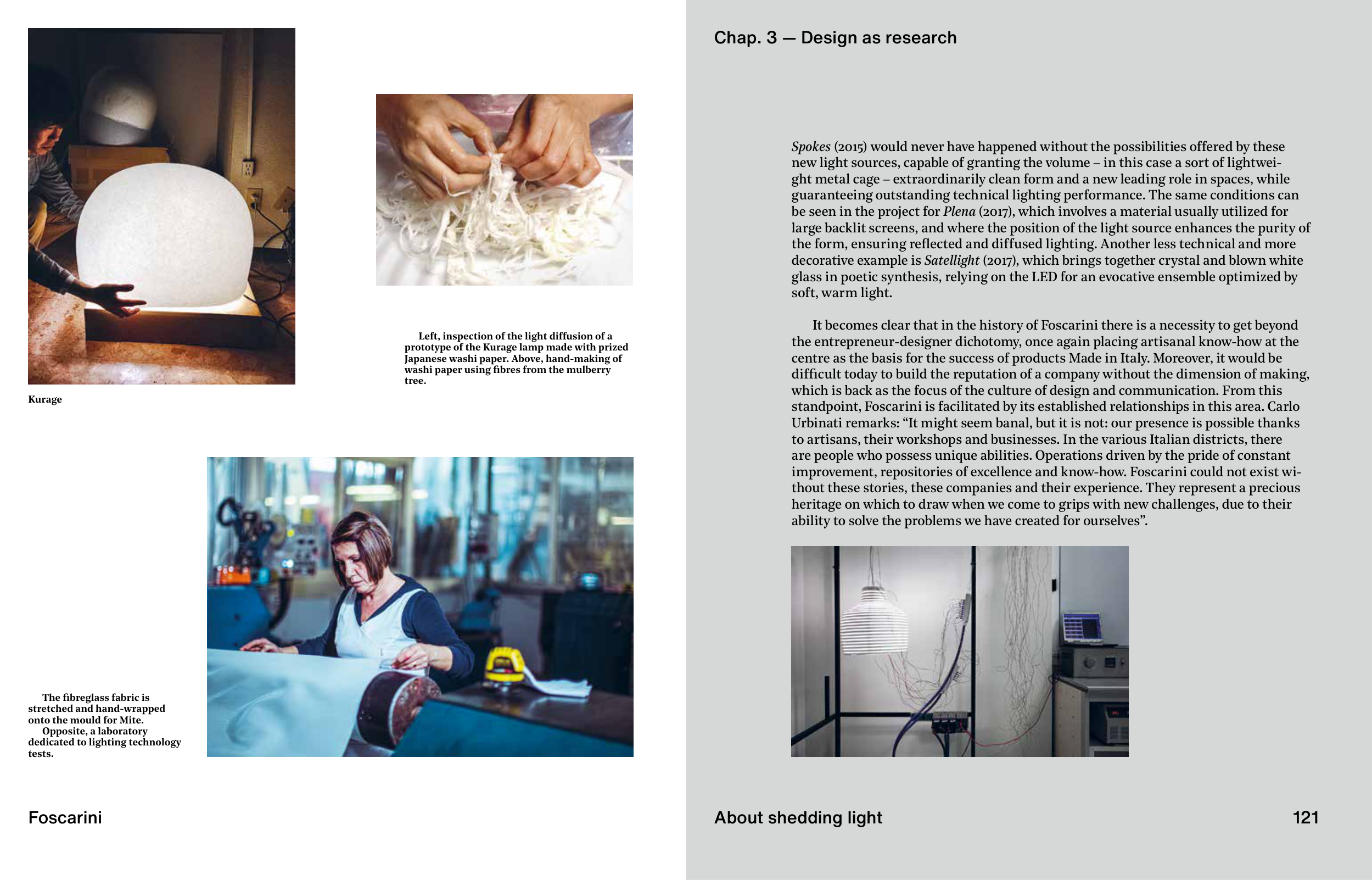121
Foscarini
Kurage
Left, inspection of the light diffusion of a
prototype of the Kurage lamp made with prized
Japanese washi paper. Above, hand-making of
washi paper using fi bres from the mulberry
tree.
The fi breglass fabric is
stretched and hand-wrapped
onto the mould for Mite.
Opposite, a laboratory
dedicated to lighting technology
tests.
About shedding light
Chap. 3 — Design as research
Spokes (2015) would never have happened without the possibilities offered by these
new light sources, capable of granting the volume – in this case a sort of lightwei-
ght metal cage – extraordinarily clean form and a new leading role in spaces, while
guaranteeing outstanding technical lighting performance. The same conditions can
be seen in the project for Plena (2017), which involves a material usually utilized for
large backlit screens, and where the position of the light source enhances the purity of
the form, ensuring refl ected and diffused lighting. Another less technical and more
decorative example is Satellight (2017), which brings together crystal and blown white
glass in poetic synthesis, relying on the LED for an evocative ensemble optimized by
soft, warm light.
It becomes clear that in the history of Foscarini there is a necessity to get beyond
the entrepreneur-designer dichotomy, once again placing artisanal know-how at the
centre as the basis for the success of products Made in Italy. Moreover, it would be
diffi cult today to build the reputation of a company without the dimension of making,
which is back as the focus of the culture of design and communication. From this
standpoint, Foscarini is facilitated by its established relationships in this area. Carlo
Urbinati remarks: “It might seem banal, but it is not: our presence is possible thanks
to artisans, their workshops and businesses. In the various Italian districts, there
are people who possess unique abilities. Operations driven by the pride of constant
improvement, repositories of excellence and know-how. Foscarini could not exist wi-
thout these stories, these companies and their experience. They represent a precious
heritage on which to draw when we come to grips with new challenges, due to their
ability to solve the problems we have created for ourselves”.
121


